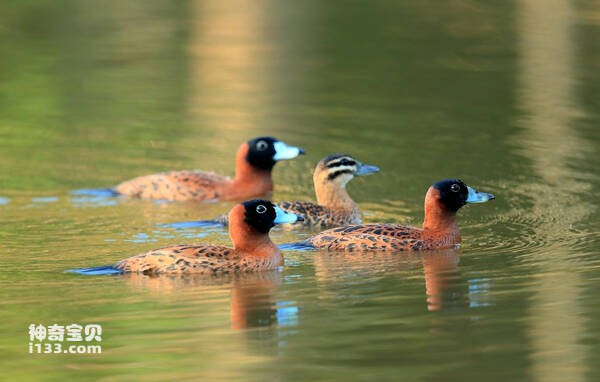Nomonyx dominicus
IUCN
LCBasic Information
Scientific classification
- name:Nomonyx dominicus
- Scientific Name:Nomonyx dominicus,Masked Duck,Oxyura dominicus
- Outline:Waterfowl
- Family:
Vital signs
- length:About 33 cm
- Weight:Around 363g
- lifetime:No textual research information is available
Feature
Male ducks assist in brooding, a rare trait among ducks
Distribution and Habitat
Distributed in Antigua and Barbuda, Argentina, Bahamas, Barbados, Belize, Bolivia, a multi-ethnic country, Bonaire, Saint Eustatius and Saba, Brazil, Cayman Islands, Colombia, Costa Rica, Cuba, Curacao, Dominica, Dominican Republic, Ecuador, El Salvador, French Guiana, Guadeloupe, Guatemala, Guyana, Haiti, Honduras, Jamaica, Martinique, Mexico, Montserrat, Netherlands Antilles (Bonaire) ), Nicaragua, Panama, Paraguay, Peru, Puerto Rico, Saint Kitts and Nevis, Saint Lucia, Saint Vincent and the Grenadines, Suriname, Trinidad and Tobago, Turks and Caicos Islands, United States, Uruguay, Venezuela, Bolivarian Republic.
Vagabond: Virgin Islands.
It is found in heavily vegetated freshwater swamps, tree-covered ponds, mangrove swamps, and often in rice paddies.
Appearance
It is the only member of the genus Nomonyx, and is classified as Oxyura. It is 33 cm long, has a wingspan of 43 cm, and weighs 363 grams. Adult males have a black face during breeding, with mottled rust-colored wings and body feathers. The male, female, and duckling are grayish-brown in winter, with two brownish-yellow stripes running horizontally through the dark cheeks, a thin black bill, and white eye rings. The upper body is reddish brown with black, brown and reddish-brown spots. There are black-brown stripes on the back and sides, and white wing mirrors are visible in flight. The female duck is a mottled brown with a lighter overall color, dark cap, brown to reddish-brown eyes, and striped cheeks. Bluish-gray beak; Tail black; The legs are gray and black.
Details
Nomonyx dominicus (Nomonyx dominicus) is a very typical social teal of the family Canidae.

Mixed with other ducks in groups, good at swimming and diving, often diving underwater stay time is not long, generally about 3-5 minutes. When swimming, the tail is often raised high. The flight pattern when taking off from the water is rapid flapping, tight beats and direct flight. Aquatic plants that feed mainly on seeds, roots and leaves. They also eat insects, fish, frogs, crustaceans, mollusks, worms, etc.
Floral-faced hardtail ducks are monogamous. Female ducks build roofed or cup-shaped nests lined with feathers in shrubs or grass near water vegetation. Each nest lays 4 to 10 white or pale yellow eggs and hatches for 23 to 24 days. The breeding season is from May to July.
Listed on the International Union for Conservation of Nature (IUCN) 2012 Red List of Threatened Species ver3.1 - Low Risk (LC).
Protect wild animals and eliminate wild meat.
Maintaining ecological balance is everyone's responsibility!








